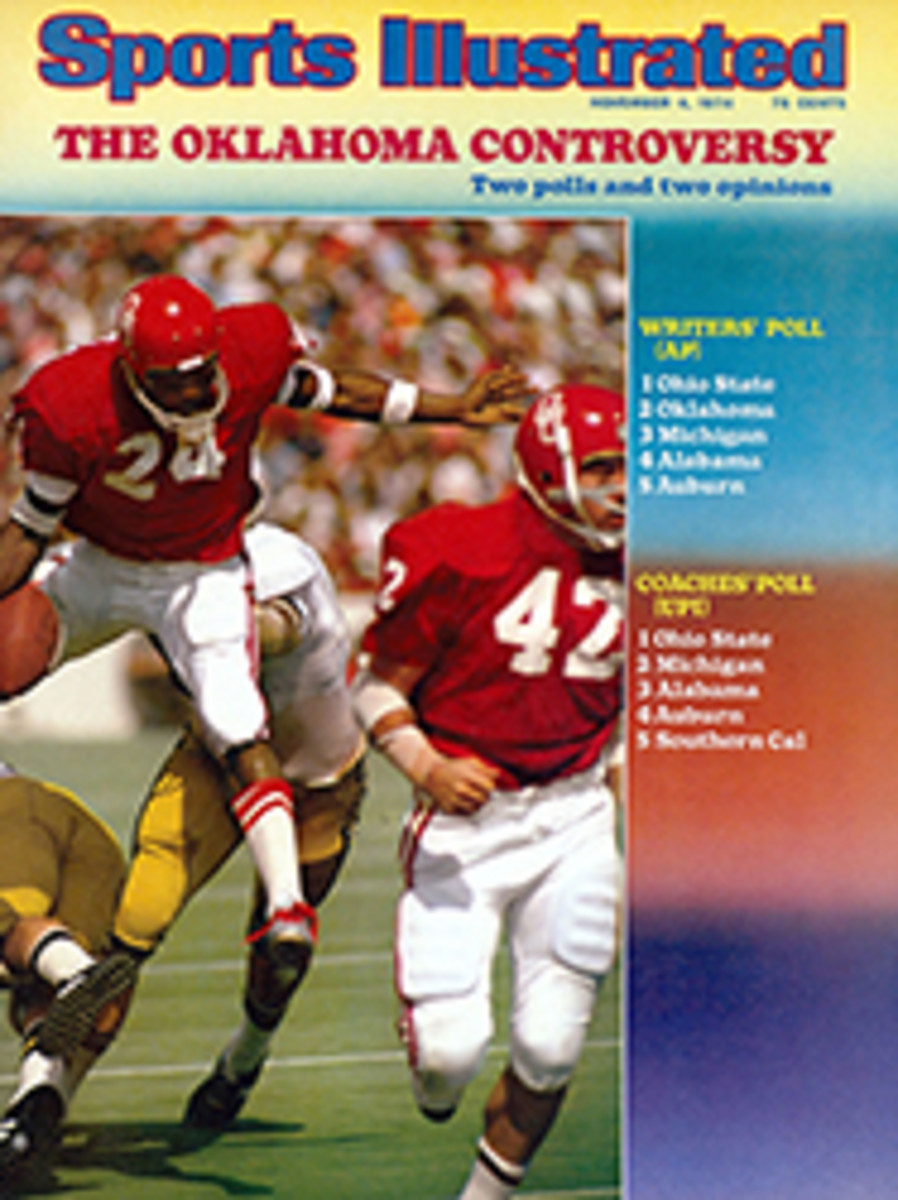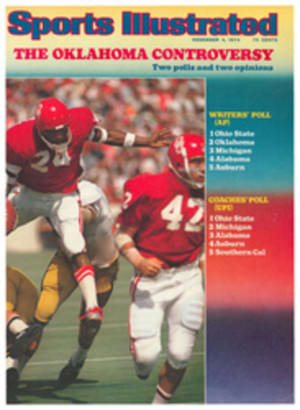
Rebirth of a 'dead' lake
Fishermen trolled for coho salmon on Lake Erie last month while inshore at Buffalo's Erie Basin Marina lunchers at the outdoor restaurant tables enjoyed the breeze. There was even talk of building a park nearby on the Buffalo River, the main shipping channel.
Fishermen trolling off Buffalo? People eating by the shore? Talk of a park along the Buffalo River, "the filthiest stream in America" only a few years ago? Yes, and then some. "Dead" Lake Erie and the grungy Buffalo River are making a remarkable comeback.
The water is not clean enough for swimming as yet, but the signs of improvement are there. In the last two years the lake bottom off Buffalo has produced abundant hatches of caddis flies. "This last happened in the 1930s when conditions were getting worse," says Dr. Robert Sweeney of the State University College at Buffalo. "The fish and insects that prey on the caddis were dying from pollution and could not hold the flies in check. I think what we're seeing now are the same conditions in reverse."
No one could be more heartened by this news than Stanley P. Spisiak, a retired jeweler and realtor and full-time conservationist. Forty years ago Spisiak began a one-man campaign against defilement of the lake and its tributaries, and for a long time his was a lonely voice. Now he is being hailed as the area's savior. Strangers come up to shake his hand, and even the Buffalo Evening News, which long ignored Spisiak, has paid editorial tribute.
The cleanup urged by Spisiak began several years ago, but success was not evident to the eye until last spring when smallmouth bass and coho began showing up in the Buffalo River. In past years the Buffalo was so polluted with acids and other industrial chemicals that boaters who mistakenly ventured upstream sometimes became ill. If a dead fish were floating in the river, no one could have seen it because the surface was black with oil. On four different occasions the river caught fire, once sending flames 30 feet high in midwinter. Even without a fire, the Buffalo was unusually hot in summer because industry sucked it in and forced it out repeatedly for cooling purposes, and there was so much evaporation in the process that the river often ran backward as water surged in from Lake Erie.
Spisiak was so excited by this year's spring-run fish that he called James Biggane, the state conservation commissioner, to have a look from the river's Harlem Road bridge, and a department collecting crew came up with yellow perch, sheepshead and carp and just missed a big trout.
Conditions continued to improve during the summer. The lake water off Buffalo showed a clarity not seen in years, and a few schools of fish even took up residence in the river. "There are minnows in the river in the slip at Pacific Molasses," says Tom Reardon, harbor master of the Port of Buffalo and a former police diver. "When I used to dive in the river, the diaphragm on my regulator would actually clog up from the pollution."
Elsewhere throughout the lake there are encouraging signs, although not as dramatic as in the Buffalo area. Dr. Andrew White of John Carroll University has observed a few northern pike spawning in Cleveland Harbor, and green sunfish, carp and goldfish are living year-round in Ohio's Cuyahoga River, which also has caught fire in the past. "I think the lake can be fixed," says Dr. White. "It can be almost restored."
Historically, Erie was a treasure. The southernmost and shallowest of the Great Lakes, it was the most productive in fish because of sunlight penetration, natural fertility and variety of habitat. A study in the 1920s described the plankton in the lake as occurring in "almost unbelievable abundance," and a biologist noted that a five-minute plankton haul in Erie netted 10 times the amount obtained in two hours in the Atlantic Ocean. The annual commercial fish catch, up to 75 million pounds as late as 1956, often equaled that of the four other Great Lakes combined. Until the mid-1950s, the flood of pollution entering the lake was dismissed because of the naive notion that Erie, the 12th largest lake in the world, was simply too vast to be affected, and moreover, according to the 1920s study, the wind "aerates the water and in the presence of sunlight dilutes and quickly eliminates waste products." As various desirable species, such as the lake trout, blue pike, sauger, cisco and whitefish, disappeared, overfishing was blamed. For all of Spisiak's warnings, it was not until 1955 that alarm bells began to ring, albeit somewhat softly, in official circles. That was the year entomologist N. Wilson Britt found that the sudden decline of mayflies, a valuable fish food, in the western basin was due to low oxygen caused by pollution.
For Spisiak, alarm bells had been ringing since the 1930s. The 15th of 16 children of Polish immigrants, he was orphaned at 16 and went into the jewelry business for himself with $1.96 in capital. He first became involved in preserving the lake's resources when he protested against the dredges that used to flock to Buffalo to suck up the sand off Woodlawn Beach, where he swam. Spisiak argued that they were destroying spawning grounds in the lake, and with the help of a local assemblyman he was able to persuade the state legislature to enact a bill putting an end to the dredging. By then Spisiak was hooked on conservation, and he gave most of his time to it; his jewelry business was seasonal, involving the Christmas trade and June graduations and weddings. He educated himself in water chemistry and fishery biology to the point where he began teaching teachers, and he also served as president of three sportsmen's clubs and became active in the New York State Conservation Council.
For the last 24 years Spisiak has been chairman of the Water Resources Committee of the council, which represents 300,000 organized sportsmen in the state. A tireless speaker (31 appearances in 25 days recently), he was not a popular figure with politicians or industry officials as he declaimed against polluters. In 1953 he began carrying a pistol after part of his nose was torn loose from his face by two thugs who had been hired to throw him down a flight of stairs after one of his speeches.
As Spisiak saw it, Lake Erie's problems were manifold, but the principal one was the annual dredging of pollutants from the 15 lake ports. The resulting "spoil" was then dumped in the open lake. In the Buffalo River alone, the U.S. Army Corps of Engineers dredged 175,000 cubic yards of spoil a year to keep the river navigable. Indeed, industries discharged so much coal-tar residues and other wastes that barges serving the companies were unable to dock alongside the plants unless the spoil was dredged. All the spoil dredged by the corps was dumped in the lake two miles off Buffalo. Inasmuch as the corps had been dredging and dumping at the same site for more than 50 years and the lake depth was still 35 to 50 feet, Spisiak maintained that the countless tons of pollutants were being widely dispersed by currents. The corps disagreed. "Idiots," said Spisiak. He urged that the spoil be placed in diked impoundments so pollutants could not circulate in the lake.
All told, the corps was dredging and dumping 4.5 million cubic yards of spoil each year from the 15 lake ports. "Enough," Spisiak was fond of telling congressional committees and anyone else who would listen, "to fill a 500-mile-long freight train of coal cars. They would reach from Buffalo to Washington, D.C."
In January of 1966 Spisiak went to Washington to receive the Water Conservationist of the Year award from the National Wildlife Federation. Seated next to Mrs. Lyndon Johnson at the dinner, he told her of the corps' abuse of Lake Erie. Lady Bird brought the problem to her husband's attention, and that August they both came to Buffalo to see Spisiak. On the morning of the President's arrival, Spisiak took a Coast Guard cutter up the Buffalo River and used a bucket to haul up slop from the bottom. When the presidential party came on board, Spisiak handed the bucket and stirrer to the President. LBJ stirred the bucket. Everyone got a whiff.
Spisiak: They're dumping 175,000 cubic yards of this slop right out in the lake every year from the Buffalo River. They're dumping 4.5 million cubic yards every year from 15 ports.
LBJ: Who's they?
Spisiak: The U.S. Corps of Engineers.
LBJ: Why, those bastards!
Lady Bird: Oh, Lyndon, we mustn't let this continue.
LBJ: Don't worry, I'll take care of it.
That fall Johnson issued an executive order decreeing that henceforth spoil was no longer to be dumped in the open lake but to be placed in diked impoundments. Concurrent with this, industries were forced to clean up, and a cooling-water project, supported by Spisiak, has put an end to companies pumping the Buffalo River and forcing it to run upstream instead of down. There is still work to be done, but Spisiak envisions the eventual reopening of Woodlawn Beach, where he started his crusade. "We're on the one-yard line," he says. "I hope there's no fumble."
PHOTO
SPISIAK CHECKS A LAKE TRIBUTARY

